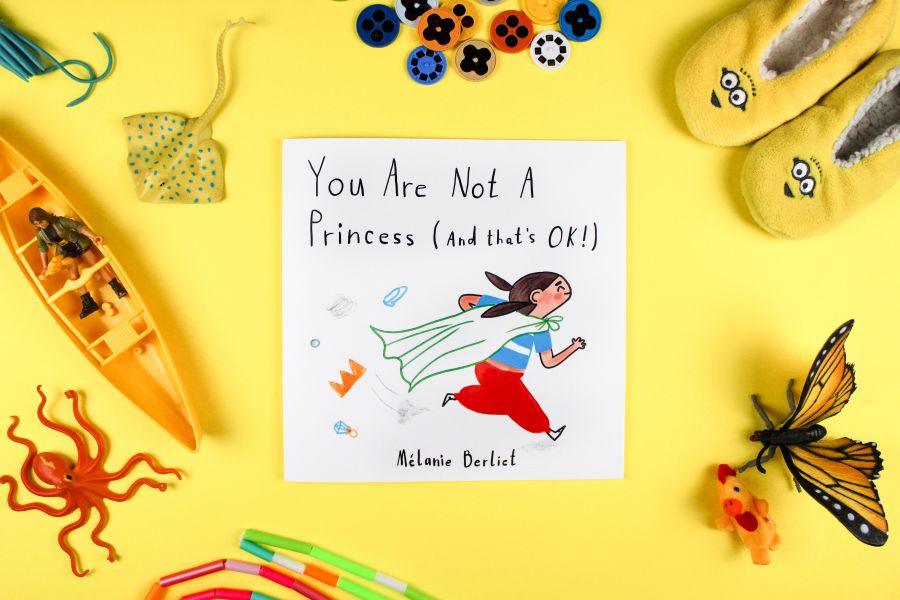2020小学英语四上教学设计1
教学目标
a.学生能听,说,读,写单词:post card, magazine, dictionary, comic book, newspaper五个单词,并能在日常生活中使用;学生能听懂,会说句型What are you going to do? I’m going to…和When are you going to do? This afternoon…。 b.学生能够熟练运用What are you going to do? I’m going to…这一句型和听懂,会说以及基本运用When are you going to do? This afternoon…这个句型,进而在实际生活中能够谈论将要做的事情以及将要在什么时候做事情。
教学重难点
教学重点:学生掌握本课时的五个四会单词和两个句型的熟练运用,区分What和When的问答
教学难点:单词magazine 和dictionary的发音,熟练运用将来时并区分What和When的问答
教学过程
Ⅰ.Warm up
1.Chant 教师播放Let’s chant.学生跟着录音一起chant。 T: First, let’s warm our bodies. Let’s chant together.
(设计意图:通过听唱欢快的chant让学生尽快进入英语学习的氛围,复习Part A学过的句型。)
2. Free talk
教师走下讲台,提起三到四个同学进行对话。教师用PPT展示动词词组 T: Hello, … S: Hello, Mr Hu
T: What are you going to do tomorrow/this weekend…? S: I’m going to …….
(设计意图:通过师生间自由回话复习Part A学过的一般将来时的句型,也为下面情境导入学习做准备。)
Ⅱ.Presentation
1.老师问全体学生: Do you like reading books? Where are you going to buy books? Ss: In the bookstore.
T: What kinds of books can you buy in a bookstore? Who can tell me?
Ss: Storybooks, English books, notebooks, magazine…….
T: You can buy some novels, too. You can buy novels written by“莫言”.
The literature of 2012 Nobel winner(诺贝尔文学奖)
(设计意图:通过和学生讨论书店买书为引出本课新知做铺垫,同时告诉学生中国第一个诺贝尔获奖者莫言)
2.Learn new words
(1)We can also buy some things else in the bookstore. Do you know what they are? I say ,you guess.
教师边在黑板上画出简笔画问:It’s made of paper ,we can look up many new words. It’ thick. It is helpful to us. What’s this?
Ss: It’s a dictionary(字典).
教师在简笔画旁写出单词。学生模仿发音。强调tion 的发音。
(2)T: It’s made of paper. When New Year’s Day is coming, we often send them to our friends. And give our best wishes to our friends. What is it? Ss: It’s a postcard(明信片)
PPT展示post card 并且教授新词.呈现并且板书句子 (3)教师再在黑板上画出简笔画漫画书,然后问: It’s made of paper. There are many pictures in it. What’s this in English ?
Ss: It’s a comic book. T:How do you spell? Ss: C-O- M-I-C comic
(强调o与i 的发音,并让学生用手默写下来,做到及时掌握。) (4) Let’s guess again. It’s made of paper. It’s large. We can read news it it. What’s this in English?(教师拿出一份报纸) Ss: It’s a newspaper.
教师解释拼写由new—news+ paper.—newspaper单词较长,学生记忆有困难时,想办法解决。及时板书,领读 教师用同样方法教授magazine.
(设计意图:通过猜测学习单词,激发学生学习兴趣)
3.Practice
(1)So many wonderful books, We can get much knowledge from them. What are you going to buy in the bookstore?
S1.I am going to buy comic booking in the bookstore. S2:I am going to buy a dictionary in the bookstore. S3: I’m going to buy a newspaper in the bookstore. S4:I am going to buy,,.
When New Year’s Day comes,
呈现生词细致,但方法单一。教师描述、不一定学生能说出生词。建议根据学情调整。评委注
仔细检查,避免笔误。评委注
(设计意图:相信学生乐于回答这样的问题,发表自己的想法的。)
(2)T: All of you like reading books. Well done! When are you going ? S1: This afternoon.
T: He is going to buy a book in the bookstore, (对一个学生):What about you?”
Let’s ask her together: When are you going? S2:This Sunday.
(设计意图:由去购物过渡到问什么时间去,自然合理)
(3)教师出示自学指导:Boys and girls, ask and answer like this, using the words in the bank.
Let’s learn
T:What is Mike going to buy in the bookstore? When is he going? Listen and find the answer. (1)listen and answer. (2)Listen and repeat. (3)Practice in pairs.
(设计意图由于单词已经学完,让学生带着问题来听,来模仿朗读,来回答问题。让学生时刻对英语有兴趣。并且做到单词放在句中练习,做到词不离句。) Ⅲ.Practise
T: Look, this is a bookstore. There are many books here. What are you going to buy?
自学指导:
--What are you going to do? --I’m going to _________ --When are you going? -- ___________.
Words bank
1.magazine comicbook newspaper dictionary post card….
2.Tomorrow tonight this evening this afternoon next week….
What are you going to do?
I’m going to buy an English book in the book store.
T: It’s made of paper. When New Year’s Day is coming, we often send them to our friends. And give our best wishes to our friends. What is it? Ss: It’s a postcard(明信片)
PPT展示post card 并且教授新词.呈现并且板书句子
教师再在黑板上画出简笔画漫画书,然后问: It’s made of paper. There are many pictures in it. What’s this in English ?
Ss: It’s a comic book. T:How do you spell? Ss: C-O- M-I-C comic
(强调o与i 的发音,并让学生用手默写下来,做到及时掌握。)
Let’s guess again. It’s made of paper. It’s large. We can read news it it. What’s this in English?(教师拿出一份报纸) Ss: It’s a newspaper.
教师解释拼写由new—news+ paper.—newspaper单词较长,学生记忆有困难时,想办法解决。及时板书,领读 教师用同样方法教授magazine.
(设计意图:教师展示书店以及各种图书的图片,引导学生用I’m going to buy...来表达自己打算买的图书。通过“你呼我应”游戏进行操练,让学生在具体的选书情境中对所学的词句进行巩固。)
Ⅳ. Production
教师课前布置学生准备各类图书,拓展环节设计图书交流义卖活动,让学生用学过的词句进行真实交流。先小组活动,老师指导,然后选出小组代表汇报展示。
Can I help you?
Yes. I’m going
to buy some comic books.
Herethey are!
Thank you.
(设计意图:拓展环节设计图书交流义卖活动,让学生用学过的词句进行真实交流。这样的活动促使学生在实践活动中运用所学英语,增强对所学英语的体验,同时培养学生的合作精神。
Ⅵ. Homework
1. Copy the new words.
(设计意图:单词教学是学好英语的基础,无论课堂还是课下都应牢记)
2.采访周末去书店的同学。用英语做好记录
(设计意图:学以致用,体现英语的交际性和实用性)
2020小学英语四上教学设计2
教学目标
1、能够听、说、认读 Let’s read 部分的对话;
2、能够根据对话内容回答文后的问题;
3、能够就自己20年后的理想状况进行讨论。
教学重难点
听、说、认读 Let’s read 部分的对话。
教学过程
Step 1:温故知新,创设愉快学习氛围。,根据教材及小学生的年龄特点,我在进入新课前先让学生唱自编歌谣。如:(Enjoy a song)
GS: What are going to do? (twice each time)Play football, Play football
BS: I’m going to ply football.(如此不断替换新词)这样不但可复习大量旧词组:take pictures, play chess, play games, plant tree, watch TV, go chopping, go hiking and so on 且可较好操练新句型。”What are you going to do? I’m going to…
Step 2:站起来,你说我说大家说,提高自信心 自由问答(教师不点名,让学生勇敢站起来one by one 问答)
Step 3:Game:Guessing:”What is she /he going to do? She /He is going to …” 增强学习的趣味性,导入新课。出示人名图片。(在背面写将要干的事情)(John, Amy.WuYifan,Zhang Peng Sarah)
E.g. 一What is Amy going to do this weekend? Guess!
一 She is going to…
T: What is Sarah going to do this afternoon? Let’s have a look.(卡片后没写任何东西)
Oh, There’s nothing. Today Let’s learn. Unis 3 B Let’s read” and find out.
Step 4:学习新课,讲究方法
1、Read and circle your new words.(学生共同找出新单词,并板书)
NW:need , else , use plant trees \
some plants ----- 对比学习 plant shop /
2、Listen the tape and try to learn by yourself.
a.First time: Just listen.
b.Second time: listen and follow.
c. Third time:listen and follow loudly.
3、Learn the new words and sentences.(ss try .T help and explain)
4、Reading
a. Follow the teacher.
b. Read together
c.Read in group. (Use the way they like)
(小组内可选择自己喜欢的方式读,教师指导阅读方式,强调语音、语调、语速)
d.小组读书比赛,突破“读”
5、Writing
Finish the exercises(课后练习和教师增加的课外题) More exercises: 5)What are you going to do this weekend?
6、What is your father going to do this afternoon? 7)What are you going to be in the future?
Step 5: 课外拓展,施展才华,真我风彩/你演我演大家乐!(改编或照演Let’s read 的对话) Eg:(学生编的内容)
A:Hello,Peter,What are you going to do this weekend?
B:I’m going to the bookstore . I want to buy some comic books .What are you?
A:I’m going to the bookstore ,too. I want to buy some post cards.
B:Let’s go together. A:Great!
B:When are we going? A:On Saturday morning. B:OK.
A:See you then.
Step 6 :小结本课内容
Homework:
以“My weekend / My weekend plan /
My busy weekend ”为题,写一篇作文,
介绍自己的周末计划。不少于30个字。
2. 听磁带,读P30 的文章五遍,签字。
2020小学英语四上教学设计3
教学目标
(一)认知目标 1. 能够听、说、读、写四个单词的第三人称形式:cooks, studies, does, goes. 2. 能够听、说、认读句子:Does he live in China? No, he doesn’t. He lives in Australia, but he studies Chinese. 3. 能完成相关练习。
(二)能力目标 灵活运用本节课的重点句型。
(三)情感目标 教育学生积极参与,互相合作,培养团队合作意识。
教学重难点
(一)重点 掌握四个单词的第三人称单数形式。 突破方法:仔细观察单间,小组合作,读写造句,掌握重点。
(二)难点 掌握动词第三人称单数形式的变化规则。 突破方法:教师讲解,学生练习变换动词,突破难点。
教学过程
Step 1: Warm-up
1. 教师出示卡片动词词组给一位学生看,该学生做相应动作,不得说话,其他学生分成六个小组,进行猜词组比赛,猜对词组最多组给予奖励。
2.Let’s chant
I like riding, I like riding, riding a bike.
He likes diving, he likes diving, diving, diving, diving.
She likes playing, she likes playing, playing the violin.
They like collecting, they like collecting, collecting stamps.
We like making, we like making, making kites.
3. 师生用单词卡片进行问答练习。如: T: What is your hobby? S: I like reading stories. T: Does your uncle live in Beijing? S: No, he doesn’t. T: Where does he live? S: He lives in Changsha. T: Does your uncle like doing sports? S: Yes, he does.
Step2: Presentation Let’s learn
I like number 7. what number do you like?
Does she like number 3?
Yes, she does.
No, she doesn't.
1.教师边和一位学生玩字谜游戏,边说:I do word puzzles.
What does Chen Jie do?引导学生回答:Chen Jie does word puzzles, too. 教师板书并教读单词does。后缀es可用另一种颜色笔标出并将动词原形do写在一旁。 T: How do you go to school? S: I go to school on foot. T: Does your father go to work on foot? S: No, he doesn’t. T: How does he go to work? S: He goes to work by bus.
2.教师引导学生回答He goes to work by bus。教师板书并教读单词goes,后缀es可用另一种颜色笔标出并将动词原形go写在一旁。教师指导学生拼写单词。引导学生比较动词原形和第三人称单数形式,并用这两种形式造句以便加深印象,让学生在比较中逐步掌握。如: I go to work by bike. He goes to work by bike.
3. 教师出示做中国菜的图片说:Look! Chen Jie’s pen pal cooks Chinese food for he,然后板书并教读单词cooks,后缀s用另一种颜色笔标出并将动词原形cook写在一旁。
4. 教师手拿英语书问:Do you like studying English? 学生回答:Yes, we do.教师说:John’s pen pal studies Chinese.教师板书并教读单词studies,后缀ies可用另一种颜色笔标出并将动词原形study写在一旁。
5. 教师将四个动词短语卡片放在讲台上,学生分成四个小组,每组派一位代表跑上讲台,领取卡片,拿到卡片后跑回小组前,带读短语。
6. 教师让学生比较动词的第二人称单数形式和动词原形,引导学生总结动词第三人称单数形式的变化规则。
①什么是第二人称单数:第二人称单数是指一个人,不是你也不是我。
②动词第三人称单数形式的变化规则:
a.—般情况下,动词后直接加s。
b. 以 s,x,ch,sh 或o结尾的动词,在后面加 es,如 watch—watches, teach—teaches。
c. 以辅音字母加y结尾的动词,把y变为i,再加es,如study—studies。
d. 以元音字母加y结尾的动词,直接加s,如say—says。
e. 动词have在主语是第三人称单数时,have改为has。
f. 动词be在主语是第一人称单数时,be改为am;在主语是第二人称时,be改为are;在主语是第三人称单数时,be改为is。 出示更多动词,让学生根据语法规律,变换动词形式。
7. 教师播放Let’s learn部分的录音,学生跟读。
8. 教师将本部分的单词卡片混在一起,快速展示给学生,学生抢答。然后同桌之间以开火车形式进行问答操练。
9. 教师示范书写四会单词,学生仿写。
Step 3:Practice Listen, match and say
1. 教师让学生先看图,用铅笔在图旁边标上相应的人名和动词词组,然后播放Listen, match and say部分的录音,学生根据录音匹配好人名和动词短语,教师再次播放录音 核对答案。第三遍录音学生跟读,然后学生和搭档自由练习对话。最后,教师让学生擦掉人名和动词短语,大声表演对话。 教师让学生听写词语,如:she,by, goes,bus,work,to,然后学生把上述词语组合成句子,如: She goes to work by bus.
2. 教师说动词原形学生书写第三人称单数形式可以请两位学生与在黑板上。注意给学生一定的反应时间,不要给学生太大压力。
Step 4: Consolidation and extension
1.用英语描述你好朋友一天的生活情况。
2. 背诵并抄写本课四会单词。
3. 做活动手册上的配套练习。
2020小学英语四上教学设计4
教学目标
(一)认知目标 能够听、说、读、写句子does he live in Sydney? No, he doesn’t. Does he like doing word puzzles and going hiking? Yes, he does.并能在实际生活中运用。
(二)能力目标 能够运用所学句型来询问他人一些日常生活情况。
(三)情感目标 教育学生要养成良好的学习和生活习惯。
教学重难点
(一)重点 灵活运用本节课的重点句型。朗读时做到语调自然,语音准确。 突破方法:反复朗读,小组互听朗读,提出建议,突破重点。
(二)难点 在实际情景中正确运用所学对话。 突破方法:创设情景,表演对话,突破难点。
教学过程
Step 1: Warm-up
1. 播放歌曲My new pen pal,师生齐唱。
2. 师生进行日常会话。如: T: Where are you from? S: I’m from China. T: What do you do on Sundays? S: I often read books. T: How do you go to school? S: I go to school by bike. T: Do you go to school by subway? S: No, I don’t. T: Do you have a pen pal? S: Yes, I do.
Step 2 :Presentation
看图描述:She teaches English。He goes to work。
He watches TV。 He reads newspapers。
What’s your hobby?出示图片:hobby?
I say you say。
Let’ s try
What does ZhangPeng’s mother teach ?
She teaches English.
Does she teach English?No , she doesn’t 。
Does she teach Chinese?
No , she doesn’t .
Does she teach math ?
Yes , she does .
教师先引导学生看问题,然后播放Let’s try部分的录音,学生回答问题。教师再次播放录音,让学生找出回答问题的关键信息,核对答案。最后让学生反复听轮,尽量听出原文并进行复述。
Let’s talk
1. 教师请一名学生介绍他笔友的有关情况,如:
I have a pen pal. She lives in Beijing. I live in Wuhan. She likes climbing mountains, singing and swimming, but I like drawing cartoons and dancing. We often write emails. 教师根据这名学生的介绍问其他学生:Does his pen pal live in Beijing/Wuhan…?帮助学生回答:Yes, he/she does./No, she doesn’t. She lives in…教师板书并教读句型:Does he/she live in …? Yes, he/she does./No, she doesn’t.
2.教师用单词卡片指导学生进行替换练习。如: Does he live in the city? Does she live in the country?
3.教师出示简单字谜游戏,教学生玩,学生完成后,教师说:These are word puzzles.教师板书并教单词word puzzles。注意单词中word puzzle的发音,可用拆分法:puz-zle。教师问:Do you like doing word puzzles? 引导学生回答:Yes, I do.
4.教师出示远足图片,提问:What are they doing? 引导学生回答:They are going hiking.教师板书并教读单词go hiking。教师可做适当解释和拓展。继续提问:Do you like going hiking? 引导学生回答:Yes, I do./No, I don’t.
5.教师向一位学生提问: Do you like doing word puzzles and going hiking? 学生回答:No, I don’t.教师向全班提问:Does he like doing word puzzles and going hiking? 学生回答:Yes, he/she does./No, she doesn’t.教师板书句子:Does he like doing word puzzles and going hiking? Yes, he/she does./No, she doesn’t.
6.教师播放Let’s talk部分的录音,让学生带着问题静听两遍录音后回答问题。① What do the two Johns like? ② What is Wu Yifan doing? ③Where does Wu Yifan’s pen pal live?
教师引导学生回答问题,并答疑。再放一遍录音,学生跟读,然后同桌两人分角色操练对话,最后选派几名学生上台表演对话。
7. 教师示范书写四会句子,学生仿写。
Step 3: Practice
1.教师准备一些卡片,正面写人名,反面写动词短语或住址,如:watch TV, read newspaper, Shanghai等。请一名学生上台抽取一张卡片,这名学生把抽到的卡片正反面内容展示给其他学生看,再请一名学生只看正面并进行提问:Does your uncle/aunt like watching TV...? Does your uncle/aunt live in...? 其他学生用Yes, he/she does. No, he/she doesn’t.来回答。
2. 教师让学生将个人信息填在卡片内。 Name: ___________ I am a boy/girl. I live in ____________. I like ______________. I go to school___________. 请一名学生上台从一堆卡片中抽取一张,告诉台下学生:It’s a boy/girl.学生分成两组,轮流提问,如:Does he/she like drawing pictures? Does he/she go to school by bus? 等等,看哪一组先猜出填写卡片的人是谁。
3.学生分组讨论自己的兴趣爱好,然后完成Let’s talk 下面的练习。
Step 4: Consolidation and extension
1.让学生听Let’s try和Let’s talk部分的录音,并积极与他人交流。
2. 抄写本课四会句子。
3. 做活动手册上的配套练习。
板书设计
Unit 4 I have a pen pal word puzzles go hiking Does he/she live in…? Yes, he/she does. No, he/she doesn’t. Does he like doing word puzzles and going hiking? Yes, he does./No, he doesn't.
2020小学英语四上教学设计5
教学目标
1、 能够听、说、认读Let’s read部分的短文,完成相应的活动。
2、 能够运用所学语言较好完成“招聘会”的活动。
教学重难点
1、本课重点是操练巩固本单元11个职业名称的单词和重点句型:What does he/she do? Where does he/she work? How does he/she work?
2、本课难点是帮助学生理解短文中的新语言,如:help the bank use their money well. likes helping people. help tourists find their way.以及三个小建议。
教学过程
1、Preparation
(1) Greetings
(2) Let’s chant(课本第56页)
(2)Free talk
预设问题:
How many people are there in your family? Who are they?
What does your father / mother do ?
Where does your father / mother work?
How does your father / mother go to work?
How does your father / mother go to work?
(设计意图:课前chant热身,让学生迅速进入学习状态并复习旧知。通过日常会话,复习巩固本单元主要职业名词及句型,达到温故而知新的目的。)
2.Pre--reading
I.T:Now, I will introduce some my friends to you. What do they do ? Can you guess?
Ss: OK!
T:OK!Let’s meet my first friend. (投影出示卡片: She works in the school. She teaches English in the school. She loves her children very much. What does she do? She is a ___________)
师生一起读卡片上的内容后,让学生猜所描述人物的职业,然后揭示答案。
II.用同样的方法阅读第二个片断.( 投影出示卡片: He works in a car company. He likes math and drawing very much. He can design(设计) many cool cars. What does he do? He is an ______________.)
师生齐读内容,出示单词卡,教读design。之后师问:What does he do ? can you guess?
S3: Maybe he is an engineer.T: Yes, he is an engineer. You are very clever!( 揭示答案)
III.Now, let’s go on , meet my friends. I have many friends. (投影出示卡片: They like beautiful cities. They like traveling(旅游) very much. Who are they? They are ______________)
Can you read the passage? Have a try, please!
(学生试读小短文,教师和学生一起读后,教师说出答案并出示tourists单词卡,并领读。)
IV.投影出示一张城市交通图,在图上标出两个旅行者。
学习本课难点句子:Help the tourists find their way.并引导学生用英语描述路线。
V.出示周杰伦照片,讨论交流信息:
(出示提示句子) Look! I think Zhou Jielun is a singer. He goes to work by car. He likes singing very much. What do you think of Zhou Jielun?(学生看提示语和同位讨论)
(投影卡片内容:
请学生说说自己的想法:I think Zhou Jielun…
投影出示句子。Zhou Jielun is a singer. He goes to work by car. He likes singing very much.
VI.出示另一张照片(教师自己的照片)用同样的方法让学生讨论交流信息。
VII.出示一名银行会计的工作照片。
用同样的方法讨论交流并学说句子:helps the bank use their money well.
投影出示提示:
学生两人一组讨论交流。教师巡视指导,纠正句子中的用词、发音等。
VIII.投影出示刚才的三段短文。Can you read the passages by yourselves? 学生看投影自由阅读。
T:Can you answer these questions? Ask and answer in your groups.
投影出示问题:
1. What does Zhou Jielun do?
2. What does Xiao Hong do ?
3. Who works in a school?
4. Who likes singing?
5. How does Miss Liang go to work?
6. Who help the bank use their money well?
教师提问投影上的问题,学生抢答。
(设计思路:通过先阅读部分与课文相似的片段,引出文中的难点句子,进行教读、理解。排除阅读障碍,降低阅读难度。并且用反复出现的方式操练重点句型。)
3.In—reading
(1) 略读。简单回答问题
学生打开课本,自由阅读课文。教师巡视指导。
参考问题:
A. How many friends do we have?
B. Who are they?
C. What do they do?
(2) 细读
逐段阅读,根据短文内容判断:
第一段:
A. Wang Li is an engineer.
B. She likes reading English very much.
C. She designs many cars and buses.
D. She goes to work on foot.
第二段
A、 Li Xiaobin is a policewoman.
B、 He works is a hospital.
C、 He helps the bank use their money well.
D、 He goes to work by bus.
第三段:can you answer my questions?
A、What does Yuan Yuan do?
B、What does Yuan Yuan like?
C、How does Yuan Yuan go to work?
T: (学生口头回答上面三个问题后)
(设计思路:通过简单判断,给与学生阅读的自信。就短文的内容提出yes-no等的简单问题,让学生带着问题阅读并通过快速阅读理解语篇的大意)
(3) 读写
Let’s read all the passages together, OK?(齐读全部课文一遍)
Now questions for you? can you answer the questions on your English books?
Ask and answer in your groups, then write the answers on your English books.
学生读短文完成文后问题,教师巡视指导。
教师借一个同学的课本,投影展示答案。
(4)听录音,跟读课文。
(5)自由朗读课文,品味语感。
(设计思路:通过阅读解决语篇内的主要内容,让学生回答有一定思维深度的问题检测学生理解程度。培养学生获取信息、处理信息的能力。然后通过做课本上的问答题落实到写上。)
4.Post—reading
T: Look! there are three tips here.(课前将文中的三条建议贴在黑板上)
老师读完三条建议后说:I want to be a singer, because I like singing very much. What about you?
S1: I want to be a teacher, because I like children.
T: Thank you. What else?
S2: I want to be an accountant. Because I like math very much.
T: Thank you. What else?
S3: I want to be a teacher, because I like students.
T: Thank you. What else? What about you?
S4: I want to be an English teacher. Because I like English very much.
(设计思路:将书上学到的知识运用于真实的生活场景之中,并得以拓展。体现了用英语的思想。)
5.Progress
(1)T: Now you are the managers in the many companies, and you need somebody work for your company. 请你根据你们公司的工作性质,到人才市场去聘用一些人员为你的公司服务。(课前在学生的桌子上分好小纸条,上面写着虚拟身份的相关信息,每组为一个公司。)
(2)教师示范在求职介绍中找到自己需要的人才,并用英语表述理由。
Zhang Yong is a happy man. He likes helping the sick(病人)people.He likes white.
He wants to be a doctor. So I choose Zhang Yong. Because he wants to be a doctor, and Yongxin hospital needs a doctor.
I work in Yongxin hospital. I choose Zhang Yong. Because Yongxin hospital needs a doctor. And Zhang Yong wants to be a doctor.
Can you tell me? What about you?
Now you can stand up and look for the personnel for your company. OK?
(3)学生以小组为单位在教室内寻找、阅读求职信息,在小组内讨论并寻找自己所在公司需要的人才。试着用英语表述聘用原因。教师巡视指导。
(4小组推举一名代表介绍自己聘任的人员并说明理由。在班内介绍。
(设计思路:设置扩展活动,让学生在真实自然的任务型活动中扩展运用阅读信息。)
(5)T: Boys and girls, toady, it’s very difficult to find a nice job. So we must work hard, and make a new day. OK?
Ss: OK!
(设计思路:通过创设一次招聘会的场景,让学生在相对真实的语境中运用所学英语。同时也培养了学生用英语思辨的能力,真正做到“用中学,学中用”。)
推荐文章
河南高考排名195560左右排位理科可以上哪些大学,具体能上什么大学2024-06-08 12:22:13
吉林外国语大学和湘潭大学兴湘学院哪个好 附对比和区别排名2024-06-08 12:17:15
江西工商职业技术学院在黑龙江高考历年录戎数线(2024届参考)2024-06-08 12:13:44
甘肃高考排名5480左右排位理科可以上哪些大学,具体能上什么大学2024-06-08 12:10:50
四川文化艺术学院和天津城建大学哪个好 附对比和区别排名2024-06-08 12:07:58
江西高考排名71510左右排位理科可以上哪些大学,具体能上什么大学2024-06-08 12:05:17
人教版英语初三下册的教学设计五篇2023-08-14 02:21:32
英语必修模块高效教学计划模板2023-08-22 01:16:31
英语听力学习的技巧和方法2023-08-22 15:07:01
山东菏泽中考英语真题大全2023-08-20 22:32:52
人教版英语初三下册的教学设计五篇2023-08-14 02:21:32
英语必修模块高效教学计划模板2023-08-22 01:16:31
英语听力学习的技巧和方法2023-08-22 15:07:01
新学期英语教学研修计划2023-08-13 11:59:23
小学三年级英语课程教案范文五篇2023-08-19 04:53:22
英语口语考试资料必备2023-08-18 01:55:49





